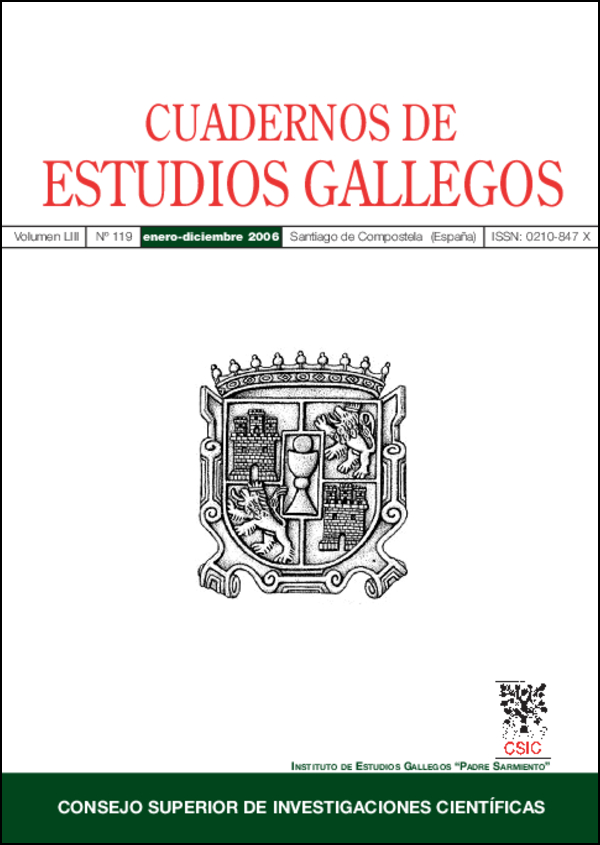La secuencia cultural en el castro de Vilela
DOI:
https://doi.org/10.3989/ceg.2006.v53.i119.1Keywords:
Castro, Iron age, Roman era, inland Galicia, cultural evolutionAbstract
The arqueological dig in Castro de Vilela brings us new data about life for the indigenous communities during the iron age in inland Galicia. The long existence of the castreño people throughout various centuries allows us to studt in depth their constructive and cultural evolution from the iron age to the Roman era. We have been able to document three main levels of occupation which outline a sequence that goes from the fourth century BC to the fourth century AD, approximately eight hundred years of community life.
The first village occupation, in the second iron age, by an indigenous community with numerous elements of cultural material of archaic character and which lasts until the first century BC, reflects a slower development of these indigenous communities than in other areas which experience constant evolution due to various favourable external and internal factors and where elements like dwellings built with hardy materials, are seen in older periods of the iron age.
Downloads
Downloads
Published
How to Cite
Issue
Section
License
Copyright (c) 2006 Consejo Superior de Investigaciones Científicas (CSIC)

This work is licensed under a Creative Commons Attribution 4.0 International License.
© CSIC. Manuscripts published in both the print and online versions of this journal are the property of the Consejo Superior de Investigaciones Científicas, and quoting this source is a requirement for any partial or full reproduction.
All contents of this electronic edition, except where otherwise noted, are distributed under a Creative Commons Attribution 4.0 International (CC BY 4.0) licence. You may read the basic information and the legal text of the licence. The indication of the CC BY 4.0 licence must be expressly stated in this way when necessary.
Self-archiving in repositories, personal webpages or similar, of any version other than the final version of the work produced by the publisher, is not allowed.















